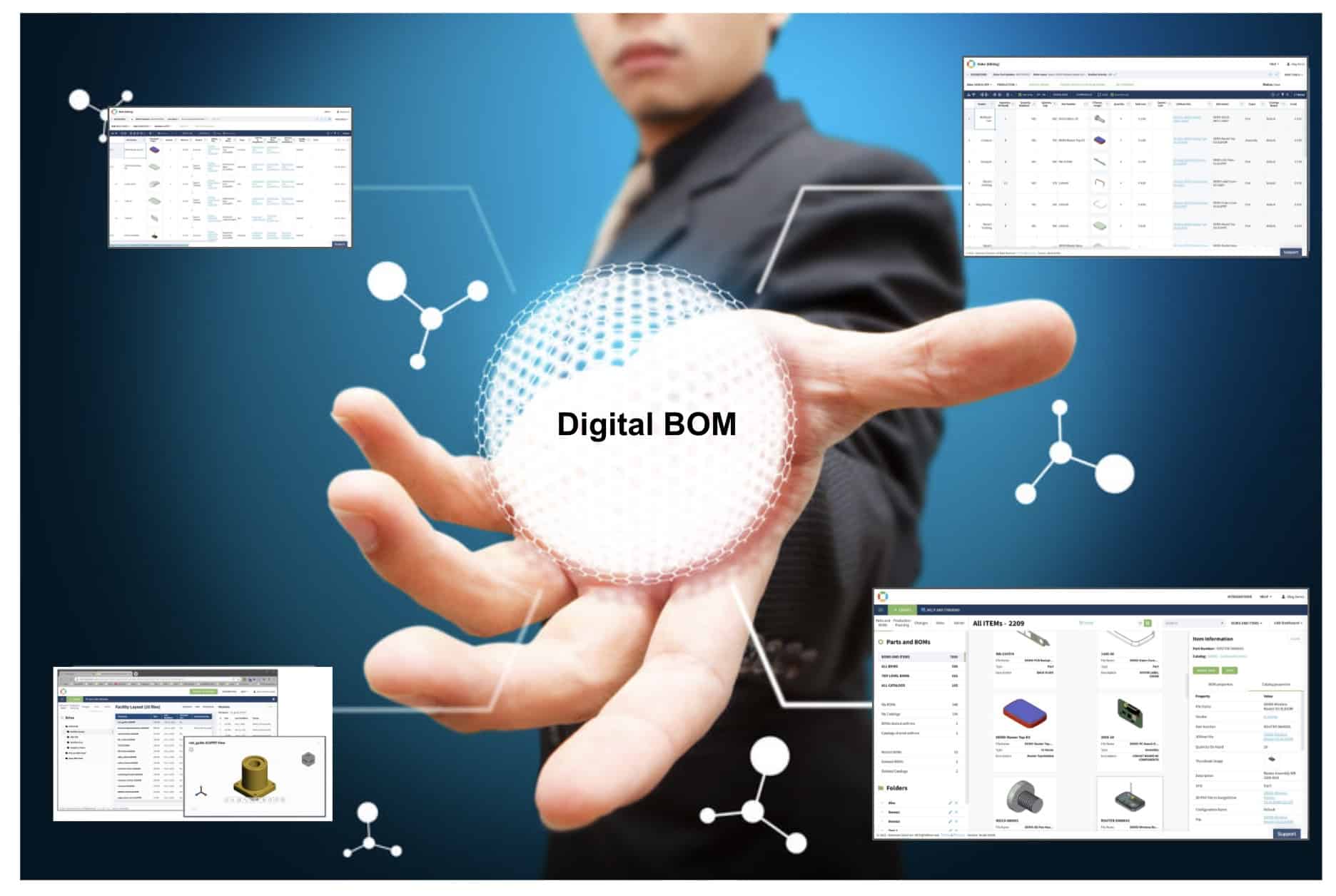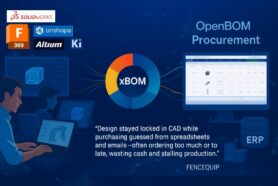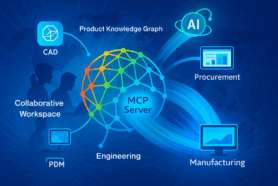
In the manufacturing world, there has traditionally been a large reliance on Microsoft Excel to create and manage Bills of Materials (BOMs). While this software is versatile and powerful, it is impossible to manage complex product structures in an efficient way using Excel and Google Sheets. These days, more and more manufacturing companies are looking for efficient BOM software management. Digital transformation is underlining the trend behind the change. According to CIMdata research, 66% of manufacturing companies are looking for a new cloud-based bill of materials tools and modern PLM solutions to establish comprehensive BOM software solutions for their business processes. This shift can have several benefits, including streamlining information workflows, eliminating data copies from one source to another, organizing a single record for product data preventing duplicated records and many mistakes. Digital tools enable coordination between departments, contractors, suppliers as well as faster responsiveness to changes.
What is a digital BOM and why do you need one?
Data is the new oil of the 21st century. One of the main objectives of digital transformation is to help companies to make a switch and start focusing on how to manage data properly in the organization, how to share and make re-use of the data as well as how to ensure that your company will take benefits of proper data management. It is related to many disciplines where data is used – BOM software management, product lifecycle management, inventory management tool, supply chain, and many others. A proper digital BOM representation can be available through all product development lifecycle phases making BOM data available for engineers, production planners, procurement team, support, sales, and maintenance.
3 Spreadsheet Pains
BOM in Excel is easy, but you will be quickly come to the point when the solution itself won’t scale. Here are some typical examples that you cannot do in Excel (or any other spreadsheet):
- Integrations and data extractions
- Data duplication
- Structure management (aka known as indented BOM)
- Revisions and changes
- Calculations
CAD and other engineering systems are one of the main sources of information to create a BOM. Although, it is easy to make a simple report, when it comes to complex structures, it is not that easy. Also, you need to do extra work to extract files and additional details. However, the real pain is doing it multiple times and updating the results. Each time you export data you start from the beginning. This process is tedious and prone to errors.
A typical way to manage a BOM in a spreadsheet is to create a list of all the parts. Once you do that, you will have a list of items with all information. Here is the problem. Another file from another assembly (or project) will have the same line for a part or assembly with the same information. Here you got a dupe and, as a result, you will have to update it in multiple places. It won’t scale and leads to mistakes.
Structure (or hierarchical data) is another big problem. Spreadsheets are flat and even when you create an indented fake structure, it won’t allow you to manage relationships. So, you cannot manage inclusions, find where it is used, and many other things.
The only change management function you have with Excel is to manage a version of an Excel file (or Google Sheet). But when you need to manage revisions of a single part, Excel won’t help.
Last, but not least, are all the needed calculations – total quantities, cost rollups, and others. To do it in Excel you will be going through a massive amount of pain and mistakes.
All engineers I’ve been talking to since we started OpenBOM told me their stories of BOM Excel pains and how usage of spreadsheets created an enormous amount of mistakes. Here are my top 3 Excel pains when it comes to the management of BOMs using Excel:
- Working with wrong data (wrong quantities, mistakes with cost, missed data, etc.)
- Lack of mechanism to support traceability (what did we order or ship to the customer?)
- Mistakes in purchasing (sending wrong Excel or forgetting parts in procurement leads to massive expenses because of wrong orders, late deliveries, and many others)
How do you get out of these problems?
How to fire “Chief Excel Officer”?
At OpenBOM, we started with a vision of how to transform engineering teams and manufacturing companies and help them to escape from the usage of spreadsheets and other “analog” tools and to adopt modern digital platforms like OpenBOM to do the job.
Here are the technologies and capabilities OpenBOM provides to solve the problem and make BOM Management easy.
- Online (SaaS) platform – register in 5 minutes and start using it with the low-cost subscription
- Ease of use, spreadsheet-like user experience, and productivity
- Real-time collaboration and simultaneous editing allows teams and companies to work together
- BOM software management includes all key elements of data management to manage data – items, product structure, changes, revisions, calculations, formulas, etc.
- Integrations with engineering tools (CAD, PDM, etc.) to extract data seamlessly and update it when changes will be coming with only the relevant properties from these systems and transferring them to OpenBOM.
On top of the technologies and products, we provide online training materials, educational resources, and onboarding training to support the digital transformation process in your organization.
Digital BOM Benefits
Adopting a digital BOM management tool brings many benefits to your organization and improves the organization’s efficiencies. Here are the top 7 benefits you will get from making the switch:
- Single source of truth for all data about the product
- Single master bill of materials shared with all stakeholders
- Improves organizational efficiency
- Speed the process of procurement and eliminates mistakes
- Provide a solution for compliance and traceability
- Streamline processes in your company
- Connects contractors and suppliers, reduces the mistakes and possible penalties
Conclusion
Digital transformation is coming and adopting digital tools is the way for engineering organizations and manufacturing companies to survive in the digital future. The modern BOM management, PDM and PLM tools such as OpenBOM create a foundation for streamlining processes, eliminating mistakes, and making your company and operation more efficient, eliminating overhead and streamliningcollaboration. It is now or never. The companies that will not make a switch will stay in the previous era and will become dinosaurs of old manufacturing. You cannot afford to do so in a modern manufacturing world.
REGISTER FOR FREE and check out how OpenBOM can help. Start your free 14-day trial to experience OpenBOM first hand.
Best, Oleg
Join our newsletter to receive a weekly portion of news, articles, and tips about OpenBOM and our community.










